Fall is an amazing time to visit Canada as the country transforms into a kaleidoscope of colour. Depending on the province, autumn in Canada spans from September to November, with the onset bringing relief from the summer heat.
The vibrant beauty of autumn can be seen in shrubs with red leaves in fall.
The landscape transforms into vibrant shades of red, orange, yellow, and brown as trees like maples, birches, oaks, and poplars change in colour Canadians engage in outdoor activities such as hiking and canoeing.
Festivals like Thanksgiving and harvest celebrations take place, and wildlife sightings abound. The season also offers delicious treats like pumpkin-flavoured dishes and maple syrup. Autumn in Canada is a captivating and memorable time of year.
The ideal season/best time for landscaping is autumn, as it provides plants with sufficient time to prepare themselves for a vibrant period of growth during the upcoming spring.
1️⃣ Pruning, Trimming, Removing & Caring
Why You Should Prune During Fall:
Generally, the usual practice for fall pruning is to avoid it. However, if you approach certain pruning tasks with self-control and a strategic mindset, you can carry them out confidently.
In Ontario, the ideal time for trimming ornamental grasses is either during the onset or towards the end of fall and, alternatively, during the beginning or conclusion of spring.
Pruning during the fall season offers several advantages for your garden maintenance. It is a prime opportunity to evaluate the condition of your trees, shrubs, and vines and create a pruning schedule or a personalized garden care guide.
With the leaves falling, it becomes easier to identify and remove any dead, damaged, hazardous, or diseased branches. However, it is crucial to determine which plants should be pruned in the fall and which ones should be left to enhance your winter landscaping plan.
❤️🩹 Remove Dead or Broken Limbs from Trees
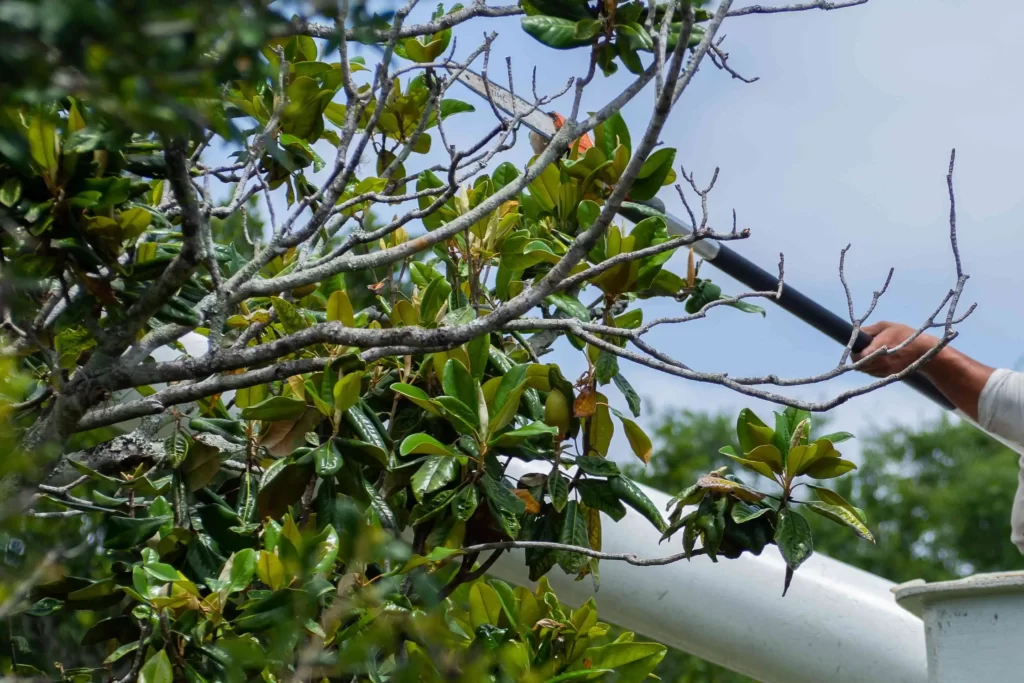
Don’t wait for bad weather to strike. ; if you know it’s time, go ahead and prune those dead or broken tree limbs. This becomes crucial, especially in areas like Sherwood Park, prone to heavy snow and ice. Trees like Birch, Cherry, and Maple should be pruned in the fall using clean tools.
🍅 Trim Fruits Bushes and Delicate Herbs
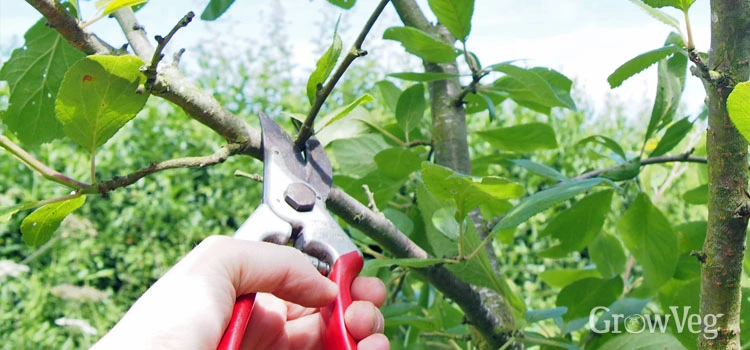
Thin-out fruit bushes bring benefits. Additionally, autumn is an opportune time to prune tender herbs like lavender and rosemary since they cannot survive winter pruning.
👩⚕️ Care For Rose Bushes and Shrubs
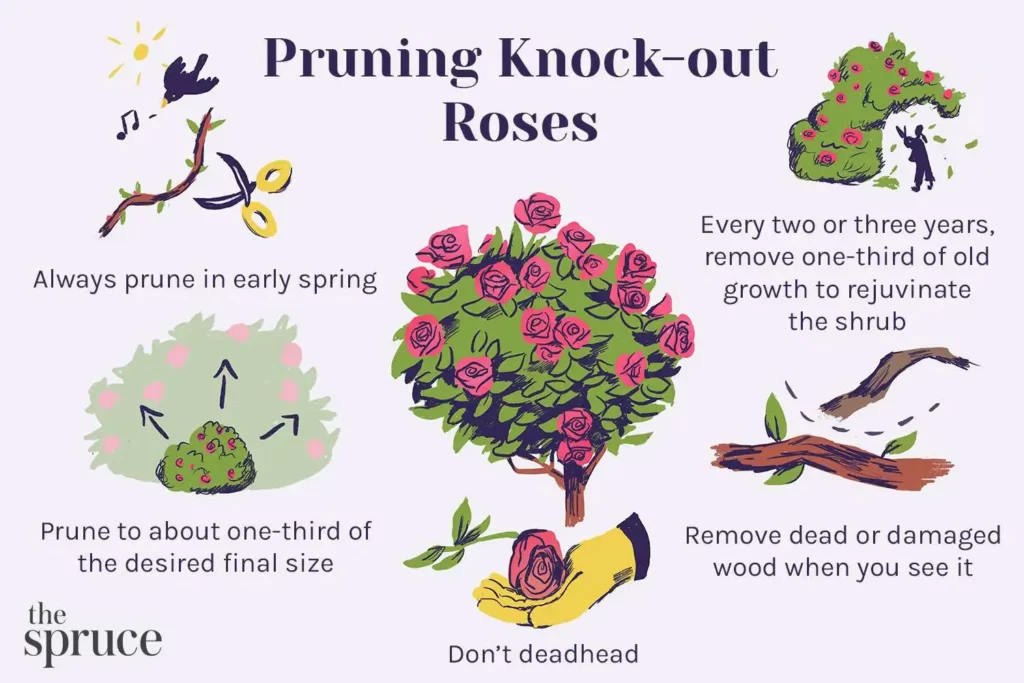
Dried rose buds can add a delightful fragrance to your home in vases or decor displays during fall. When it comes to pruning roses, it’s generally advisable to wait until the end of winter or early spring. However, if your rose bushes are overgrown or large and your area experiences heavy snowfalls, consider removing 2 to 4 inches for winter protection.
✂️ Remove Dead Foliage
Fall presents an ideal opportunity to trim perennials, cutting them down to about 2-4 inches above the soil line. Pruning in this manner, with clean cuts and no tearing, promotes the well-being of your plants for the following year.
As the blooms on perennials such as peonies wither, it is advisable to remove them, especially if the particular plant species is prone to powdery mildew.
Clearing away the deceased foliage contributes to a tidier appearance and encourages vibrant new growth when you embark on your landscaping endeavours in the coming season—starting as early as late winter or early spring.
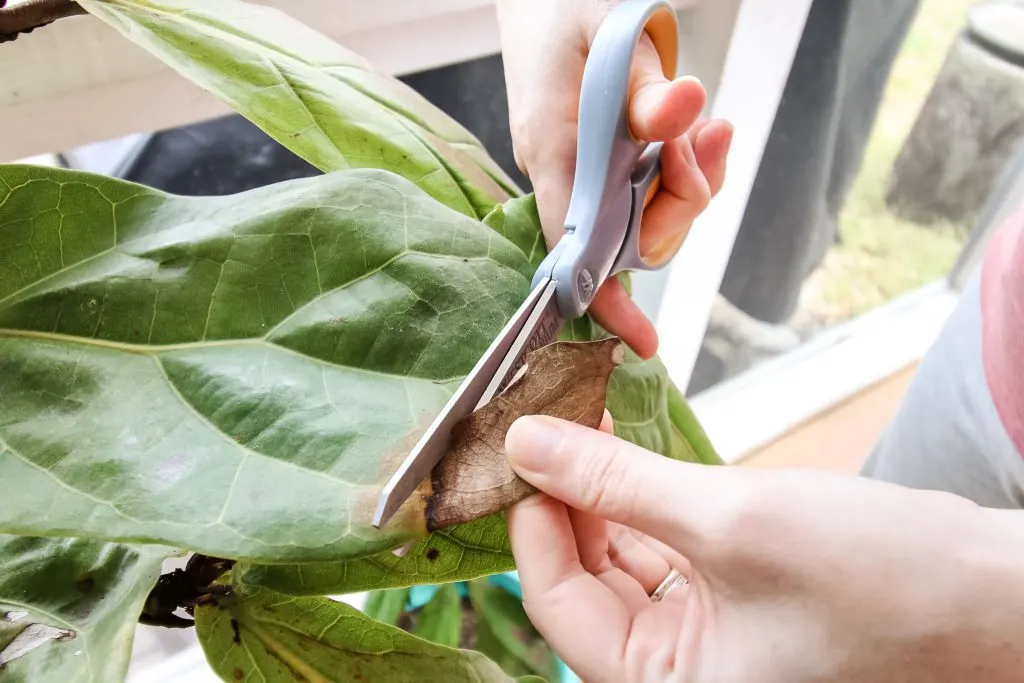
Here are perennials you should consider cutting back In the fall
- Bee Balm
- Phlox
- Lilies
- Blanket Flower
- Iris
- Daylily
- Peonies
✂️ Removing Suckers
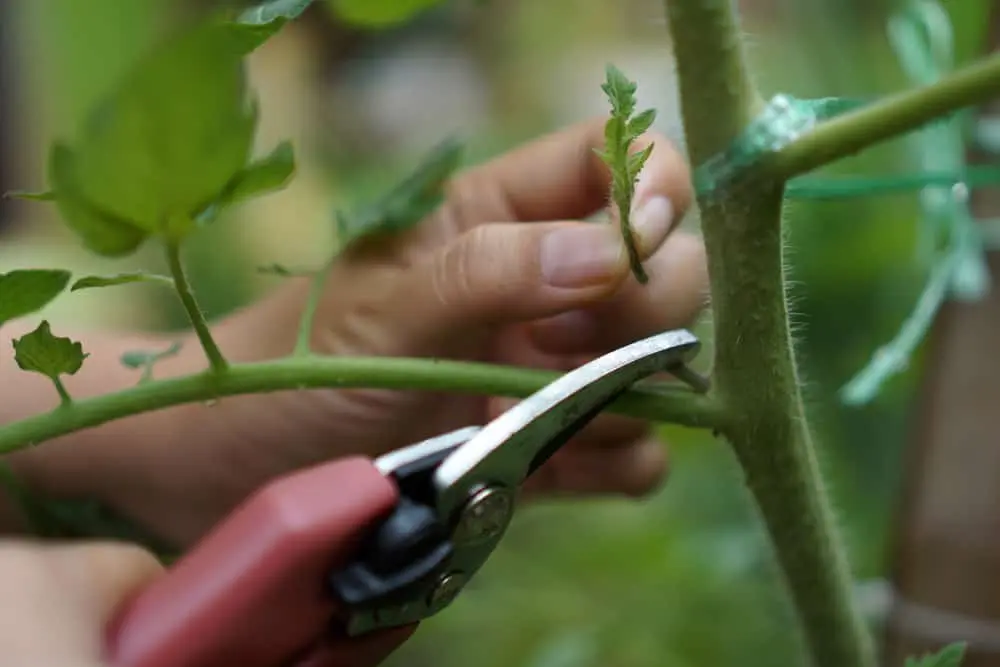
Certain plants send up shoots from the base or surrounding areas, potentially forming a plant colony. Examples of suckering shrubs include sumac, kerria, saucer magnolia, witch hazel, and coloured twig dogwoods. When you come across suckers, remove them by cutting them close to the base.
🐌 Slug-prone Plants

Slugs lay eggs in the fall, so once a few frosts have diminished the plants, trim the stems and leaves of delphinium, lupine, and any other plants that have been heavily targeted by slugs. It’s important not to compost the pruning; instead, ensure their destruction.
2️⃣ Tips: Enhance Your Outdoor Living Space During Autumn
🧅 Planting onion bulbs:
If you reside in a cooler climate, consider planting your spring bulbs in October. For those in the South, the ideal time is in the middle or late November.
💨 Aerating the Lawn:
The best time to detach is in the fall season, detaching and aerating the lawn improves water and nutrient absorption by removing debris and creating holes. Fill bare areas with grass seed for full rejuvenation.
🪴 Cleaning Pot:
Thoroughly scrub pots using a firm-bristled brush and rinse. Opt for one with a sturdy wooden handle for effective cleaning.
☂️ Protecting Plants:
Cover them with a tarp to shield robust container gardens, such as succulents, from freezing temperatures. Remember to bring delicate potted plants indoors for extra care.
🚿 Storing Hoses:
Prevent your garden hose from developing leaks by emptying it of water and safeguarding it from the elements. Utilize a hose pot or storage bench to keep it organized and secure. Don’t forget to turn off outdoor water sources.
🍁 Utilizing Leaves in the Garden:
Autumn leaves serve as excellent mulch for vegetable and flower gardens. They inhibit weed growth, retain moisture, and enrich the soil. Collect as many leaves as possible during fall and store them for future use.
Add organic fertilizer and turn the soil in your beds to reduce springtime workload. Clean and lightly oil your tools and store them in a garage to prevent rust.
🧰 Organizing Garden Tools:
Designate a space in the garage or a separate structure, such as a shed, to store tools, pots, and soil amendments. Keeping your tools in one place saves valuable time when the busy spring season arrives.
♆ Dividing Bulbs
In early fall, divide lilies once the flowers have withered and the foliage has turned yellow. Use a garden fork to gently unearth the root ball without damaging the roots. Divide the bulbs and replant them immediately. Share any extras with friends.
⛱ Protecting Patio Furniture
Invest in a lightweight, woven polyester cover for your patio furniture to keep it protected from water while allowing proper air circulation. Alternatively, choose a heavy-duty polyester design to prevent cracking in extreme temperatures.
🧹 Keeping Gutters Leaf-Free and clean
To reduce the need for gutter cleaning, consider installing aluminum, foam, or vinyl guards. These guards effectively block debris while allowing water to drain. Remember that no system is entirely foolproof, so opt for models that can be easily removed for occasional cleaning.
🍎 Clearing the Vegetable Garden
Once the growing season is over, remove all decaying plant remnants from your garden. Leaving them behind can attract pests and contribute to the spread of diseases.
3️⃣ Other notable things to do:
𓍢ִ໋🌷͙֒ Embrace the Autumn Spirit:
- Replacing worn-out summer annuals with vibrant mums, kale, and grasses gives your garden a fresh look.
- Create a charming atmosphere by decorating your outdoor space with pumpkins, gourds, and dried cornstalks.
- Utilize branches of Cotoneaster and Beautyberry to add a festive touch to your displays.
🉐 Bargain Hunt:
- Discover great deals at your local nurseries as they offer end-of-season discounts on trees and shrubs.
- Take advantage of these savings and promptly plant your new additions, ensuring they receive proper hydration.
𖥧🍀𖥧 Renovate Garden Beds:
- Utilize the cooler weather by dividing and relocating perennials before the arrival of the first hard frost.
- Provide winter protection to your garden beds by covering them with a layer of mulch.
🍃♻️ Support Wildlife 🏞️💚🌱:
- Foster a thriving ecosystem by leaving plants with seed heads, such as coneflowers, asters, and ornamental grasses, to serve as a food source for birds.
- Include native trees and shrubs in your garden that bear late-season berries, like hawthorn, viburnum, and beautyberry, to attract wildlife and add colours.
4️⃣ Advantages of Fall Landscaping
-> Enjoyable Weather
While summers in Ontario can be short and hot, fall offers cooler temperatures, making it a more comfortable time to work on your yard.
In addition, cool weather is ideal for plant growth, as warm soil promotes the development of strong and healthy roots.
-> Reduced Yard Maintenance
Fall planting requires less watering compared to spring or summer. The season typically brings optimal precipitation levels, providing the necessary moisture for plant growth.
This reduces the need for extensive watering and allows plants to benefit from rainwater, which contains more oxygen and is free from salts and treatment chemicals.
-> Seasonal Sales
Fall is a great time to take advantage of seasonal sales on plants and landscaping materials. Nurseries often offer discounted prices, allowing you to save on your landscaping expenses.
-> More Time for Landscaping
With less time spent on watering, you’ll have more time available to tackle other landscaping tasks.
Whether it’s installing a sprinkler system, creating a new patio space with interlocking pavers, or adding a water feature, fall provides an opportunity to complete these projects without exerting excessive effort.
-> Reduced Threats of Pests and Diseases
As temperatures cool down, the risk of pest damage and common plant diseases diminishes. By allowing your plants to establish themselves during fall, they become stronger and better equipped to withstand threats in the following spring.
-> Availability of Professional Landscapers
Fall and winter are typically considered slower seasons for landscape design companies. This means that professional landscapers have more availability to take on your project.
Booking an appointment during fall ensures that your preferred landscaper will have the time and resources to complete your dream landscape design without significant delays.
5️⃣ Essential gardening checklist for a successful autumn garden
As the leaves start to gracefully fall, it’s a clear indication that it’s time to embark on the fall garden clean-up season. With the arrival of cooler temperatures, it’s crucial to step outside and prepare your garden for the approaching Canadian winter.
Perhaps you haven’t had much opportunity to tend to your garden in recent weeks due to the back-to-school rush or a well-deserved break at the cottage. However, numerous small tasks must be accomplished to ensure your garden is winter-ready.
Fall presents an ideal opportunity to plant trees and shrubs, trim back perennials, remove annuals, and nurture your lawn for a vibrant spring. Remember to continue watering. Trees and shrubs that lack sufficient water during this time will face increased stress during the winter months. Below is a practical guide outlining the tasks for fall clean-up, organized by month.
Following this monthly checklist, ensure that your fall garden thrives and sets the stage for a magnificent landscape next season.
📅 September:
- Collect herbs and dry seeds for future use.
- Fill your garden beds with manure.
- Cover water features to catch falling leaves.
- Inspect houseplants for pests and move them indoors.
- Plant new trees and shrubs for a six-week head start.
- Add spring-flowering bulbs to the soil.
- Clean bird feeders and gardening tools.
- Keep watering trees and shrubs until the ground freezes.
- Bring clay pots indoors.
- Remove weeds before they seed.
📅 October:
- Move shrubs or young trees to new locations.
- Remove diseased areas from perennials, and avoid composting.
- Rake and compost fallen leaves.
- Clean up garden debris, and remove vegetable plants and fallen fruit.
- Remove dead annuals after frost.
- Trim back perennial foliage to deter pests and leave flowers with seeds for birds.
- Water trees and shrubs until the ground freezes.
- Sharpen lawn mower blade and pruners
- Trim tall grass near trees and corners to discourage rodents.
- Dig up tender bulbs and store them in an excellent, dark space.
📅 November:
- Fertilize the lawn.
- Divide spring and summer perennials.
- Turn off outside water connections, and drain hoses.
- Buy bulbs for winter forcing.
- Water the trees and shrubs until the ground freezes.
- Wrap screening around fruit tree trunks.
- Mulch rose bushes.
- Clean leaves from downspouts and gutters.
📅 December:
- Begin cultivating paperwhites and amaryllis for winter blooms.
This checklist is sourced from Landscape Ontario‘s website.
6️⃣ Prepping for Winter
- Remove or trim plants:
Clear out spent vegetables, annual flowers, and trim herbaceous perennials. Leave visually appealing perennials with sturdy stems. Preserve lavender and Russian sage with woody stems.
- Clean up the garden floor:
Rake away fallen leaves, dead plants, and debris to prevent disease and pests. Use it for composting or dispose of it appropriately.
- Build or add to compost pile:
Utilize fall cleanup materials like leaves, grass clippings, and plant trimmings for faster decomposition. Include kitchen scraps and coffee grounds.
- Cover bare ground:
Apply mulch around trees, shrubs, and plants to conserve moisture, stabilize temperatures, and suppress weeds.
- Weed and mulch:
Remove lingering weeds to prevent seeding. Apply mulch to suppress weeds, retain moisture, and moderate winter temperatures for perennials, trees, and shrubs. Leave space between mulch and plant stems.
- Protect Fragile Shrubs:
Certain delicate bushes and perennials, like Bluebeard and butterfly bush, need extra protection for winter. Add mulch or cover with lightweight fabric during heavy snow or ice. Wrap flowering shrubs in burlap or coarse mulching materials for more flowers in spring.
- Avoid cutting back most herbaceous perennials:
Protect against exposure and soil erosion in fall, and maintain a snow cover for insulation. Prune susceptible perennials and cover next year’s growth buds with a thin layer of soil/mulch. Trim plants with known diseases to prevent re-infection. Limit mulch thickness to 2-3″. Use extra compost/mulch or conifer boughs for overwintering delicate species.
- Bid farewell to Spent Plants:
Harvest ripe tomatoes and peppers and gather late-fall crops like kale and carrots before the ground freezes. Remove or trim spent vegetable and annual flower plants, allowing roots to enrich the soil. Prune herbaceous perennials after frosts, leaving a few inches of stems or using markers for identification. Leave visually appealing perennials for wildlife and winter interest.
Dispose of slimy, pest-damaged, or diseased foliage and weeds separately. Use the rest for composting to nourish future gardens.
7️⃣ Fall Landscaping Mistakes you should Avoid
🛖 Improperly Storing Tools
Give your gardening tools some attention before storing them for winter. Proper maintenance ensures their effectiveness and longevity, saving you the expense of replacements. Clean them thoroughly, using a wire brush for stubborn mud and debris. Remove rust spots with steel wool or fine sandpaper, and restore the edge of shovels, pruners, and lawn mower blades with a file.
✂️ Avoid Cutting Down the Entire Garden
While the allure of a clean slate in the fall is tempting, remember that many creatures rely on our gardens’ hollow stems, peeling bark, and other hiding spots to survive the winter. Leave them a sanctuary. Additionally, native bees, butterflies, birds, and beneficial insects benefit from winter’s “dead” gardens.
⛔ Don’t Neglect Lawn Aeration
Compacted clay soil needs occasional loosening, which can be achieved through core aeration. While typically done in spring, it can lead to weed growth.
🌲 Protect Young Trees
Newly planted young trees with thin bark, such as maple, linden, and ash, are vulnerable to winter damage caused by temperature fluctuations and critters. By late November, safeguard these trees by wrapping them from the bottom up with tree wrap or using plastic tubes provided by nurseries.
⏱ Timing Matters for Dividing/Transplanting Ornamental Grasses
Warm-season grasses like miscanthus, Pennisetum, and panicum require warm soil temperatures to establish robust root systems. As fall brings more relaxed air, these grasses enter dormancy. If you intend to move or divide them, it’s best to wait until spring when they have ample time to establish themselves.
🍂 Prevent Leaf Accumulation
Don’t underestimate the importance of raking leaves. Leaving a thick layer on your lawn throughout winter suffocates the grass, restricts airflow, and invites snow.
🦋 Don’t Overlook Spring
Plan ahead for vibrant spring colours by planting bulbs like snowdrops and crocuses during fall. Enjoy the early blooms as a sign of warmer days to come.
✂ Don’t of Pruning
Avoid pruning yews (In Ontario or anywhere actually) and boxwood after late August to prevent winter damage. Prune spring-flowering shrubs like forsythia, azaleas, and lilacs right after they finish blooming for abundant blooms next year.
🌾 Don’t Neglect Lawn Fertilization
If you choose to fertilize your lawn only once a year, prioritize the fall season. The cooler temperatures facilitate root growth, so applying fertilizer now while the grass is actively growing will result in a stronger lawn the following year.









